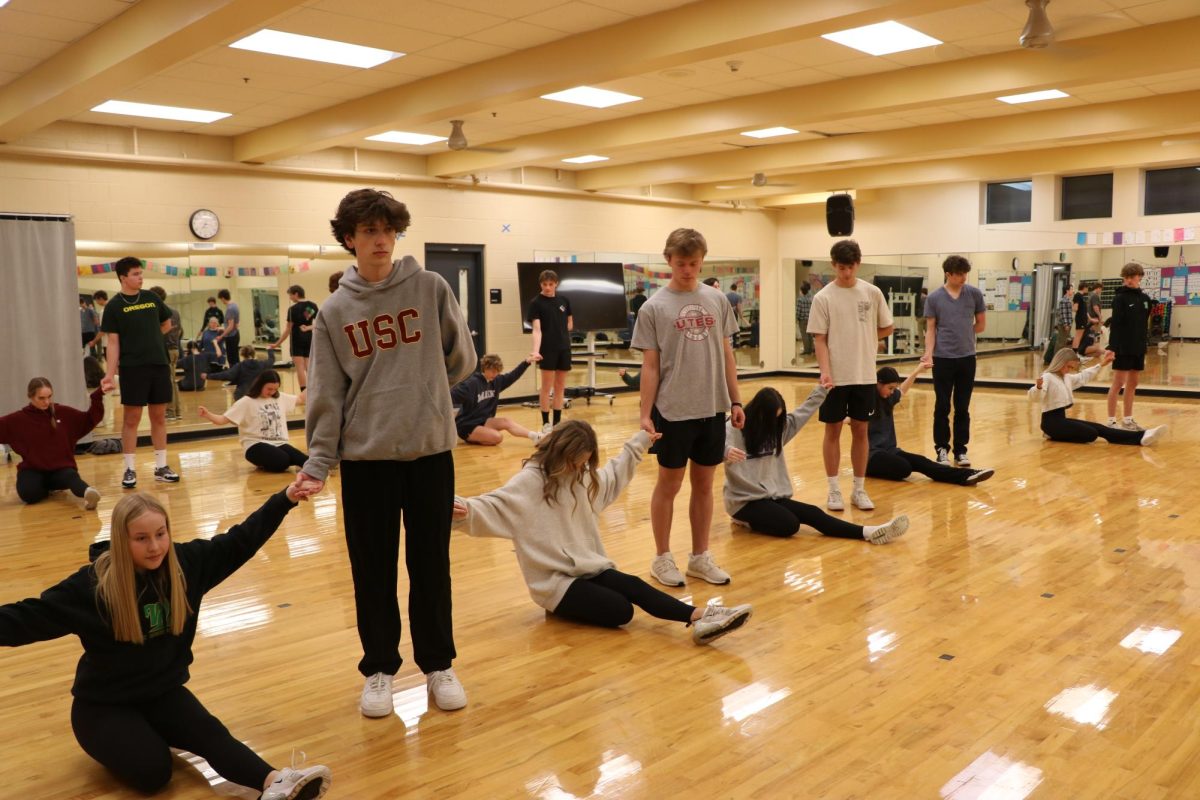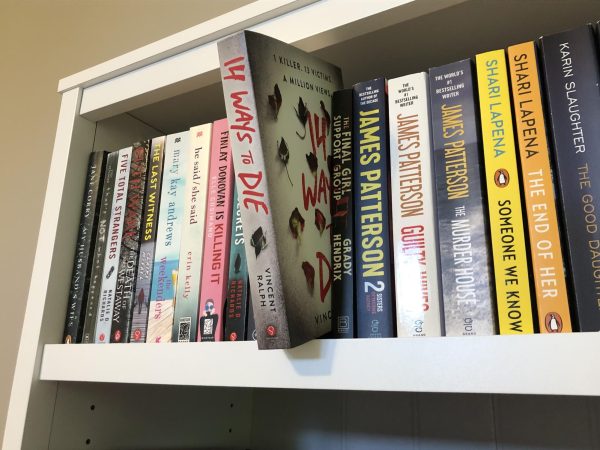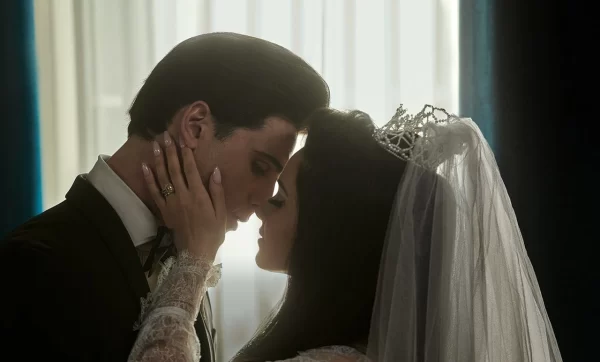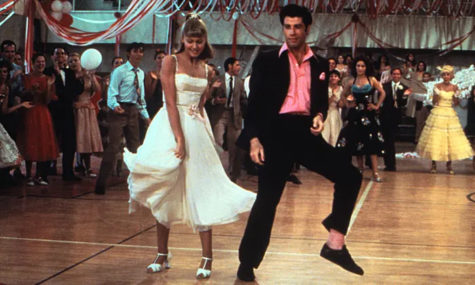Review: “All Quiet on the Western Front”
Dubbed the war to end all wars by H.G. Wells, World War I was one of the deadliest conflicts fought by man, collectively killing around 40 million people and affecting many others. Whether it be a bullet fired from a rifle, the gas that loomed in the air or the diseases that lurked in the trenches, one thing is for sure, the battlefield was a horrific place to be. This is what makes Netflix’s take on “All Quiet On The Western Front” its realism and impact.
The story follows a group of boys, around 17-18 years old who join the German army, taking place towards the end of the war when the Second Reich was losing. Around this time, many young men were conscripted into the army. Naive and innocent, numerous men were ripped from their comfortable lives and placed into a warzone.
That brings us to the beginning of the film, one that serves as a pilot for the underlying message that will be revealed at the end of the film. In the beginning, The audience is shown a gruesome series of events, we see a group of German soldiers ordered to charge French lines. What follows is pure bloodshed, men being killed by gunfire and by explosions.
The scene mainly follows one of the soldiers, who eventually at the end is killed. You see the inside of his jacket, which has his name inside of the collar. It serves as a perfect transition, in which the soldier’s uniform is seen being taken back to the homefront to be cleaned and reissued. The desperation for resources around this time in the war is portrayed very well, especially here because we eventually see our main character, Paul Baumer (Felix Kammerer), receive this uniform when he is in the draft center. Paul even asks the man who gives him his equipment if it was someone else’s uniform, only to have the man rip the name tag out, disregarding his remark and tossing it into a box full of name tags.
The contrast between the uniform the men are dressed in and how their behavior is personified is very interesting, the drab grayish-green uniform and the signature German Stahlhelm makes the men look intimidating. However, the first time an artillery shell impacts near them they take cover, showing that this is one of their first experiences of war. If you look at the later parts of the film, a single artillery shell hitting close by is merely just a normal occurance for them. The idea that they went from being afraid of the sound of the artillery simply drowning it out as if it’s just an arbitrary noise is both depressing and disturbing.
One of the first scenes in the trenches really seems to capture a variety of emotions. Paul and his friends find themselves in a crudely constructed bunker during an artillery barrage, and in this scene one of Paul’s friends crumbles under the pressure and breaks down in tears. In that moment, Paul truly saw the ugly face of war. He knew deep down that he and his friends were just kids and that they were in way over their head. This was one of the best scenes in the film, as it was one of the first scenes that conveyed the message of the story.
The film is very divergent from many war films that seem to glorify war and at times dehumanize the men on the battlefield. There is a great example of this when Paul encounters a lone French soldier while retreating alone after a bayonet charge. In this scene Paul pulls out the French soldier’s wallet while he is dying, revealing a picture of his family. Paul seems to be remorseful and it seems as if he realizes that the man he had killed had a family that would miss him and that he had just changed their entire life. This was incredibly influential, uncovering a new side of Paul’s enemy and showing a more human side of him, one that sheds tears and is not confined to a cold stoic attitude.
Just prior to this scene, we had seen French soldiers using flamethrowers on retreating German soldiers, giving us a sense that they were inhumane. But the scene following was almost as if the notion was completely contradicted and Paul realized there are men in between the sadistic and the dead. These themes are often reinforced throughout the film and it gives the film its charm, being less like a traditional action movie, and rather one that stays with you, one that does not use violence as a solution for every problem. One scene towards the end when one of Paul’s good friends Kemmerich is admitted into the infirmary after losing his leg, and Paul and his friend Kat bring him a meal. Here Kemmerich talks about his career aspirations, questioning if he could still achieve his dream.
When Paul’s friend Kat momentarily leaves the infirmary, Kemmerich commits suicide after giving him his prized scarf to Paul. As many soldiers did not have many possessions on the front and to give one of your comrades one of your personal belongings would mean you most likely were parting with it for good.
During this film though, there was a compounded feeling of sadness that seemed to linger when you realize these people’s lives would never be the same. However, the ending of the film was probably the final nail in the coffin. In the end we see a crowd of soldiers, looking quite tired, unclean and malnourished. The war is set to end the following day and the men are told by a general that they need to do one last offensive. The men are weary and put up a brief protest, some men even getting violent.
In the end the men are forced to do a last charge, Paul is involved in the offensive and in the end the end truly doesn’t justify the means. Paul’s friends in the end are all dead and in the last scene, he is killed while hesitating to kill a French soldier. Following this, whistles blow and bells ring and the war is over. The fighting suddenly stops and everyone seems to look around jaded.
This ending was pulled off very well, in the end Paul died for nothing and the majority of the men who had died, died for nothing. Unlike many other wars and conflicts, in World War I many of the men who died, died for nothing. The Entente Powers did not advance more than a couple of meters throughout the four years, yet 2 million men died on the Western Front.
The prospect of remaking this film was well timed as the previous adaptation was released in 1979. That being said, this move to recreate the film has brought this infamous anti-war film onto the radar of the newer generations who have not been alive to speak to those who had fought in the first World War and its timeless message could have a large impact on audiences views and possibly inspire a new generation of filmmakers.
One of the best aspects of the film was the fact that much of the props and the costumes were very accurate to the era and the actors were clearly trained to look the part. In addition, the film was very detailed when it came to historical accuracy. One of my favorite details in the film was when one of the characters drinks the dirty water from one of the Maxim machine guns which was great, given the fact that Maxim machine guns were water cooled and that most filmmakers don’t bother to acknowledge this in their films, something that added a sort of charming detail. In addition to that, an early scene in the film in which all of the characters are on their way to the frontlines, one of the men gives instructions on how to clean their Gewehr 98 rifles, this detail really showed that the filmmakers gave a lot of thought while making this film.
Despite the fact that the film was obviously a fictional story, the historical accuracy of this film, except for some of the battles, was generally very well cared for. However, the only thing that was not up to par is the fact that the soundtrack in the beginning of the film does not suit it well, the electronic sounding music seemed very out of place and strange, a soundtrack akin to early 1900s music would have fit the scene much better, like a German equivalent to the song “It’s a Long Way To Tipperary” by John McCormack. That being said, it would have been more fitting to have a soundtrack similar to what the 2019 film “1917” had, so essentially the soundtrack was generally unremarkable, definitely not terrible, but certainly could have been improved.
This film was simply amazing, an exceptional addition to Netflix and a very good original project. The casting was very well done, the people involved obviously portrayed the emotions of the character they played and they very much added to the immersion.
Overall, the film was very touching, its take on war was refreshing and new and the portrayal of innocence and corruption was very well done. This film is certainly one of the higher end productions done by Netflix in the past few years. So if you are looking for an unconventional war film, you should certainly watch this film for a new experience.
Your donation will support the student journalists of West Linn High School. Your contribution will allow us to continue to produce quality content by purchasing equipment, software, and continuing to host our website on School Newspapers Online (SNO).


























![Game, set, and match. Corbin Atchley, sophomore, high fives Sanam Sidhu, freshman, after a rally with other club members. “I just joined [the club],” Sidhu said. “[I heard about it] on Instagram, they always post about it, I’ve been wanting to come. My parents used to play [net sports] too and they taught us, and then I learned from my brother.”](https://wlhsnow.com/wp-content/uploads/2024/03/MG_7715-2-1200x800.jpg)





![The teams prepare to start another play with just a few minutes left in the first half. The Lions were in the lead at halftime with a score of 27-0. At half time, the team went back to the locker rooms. “[We ate] orange slices,” Malos said. “[Then] our team came out and got the win.”](https://wlhsnow.com/wp-content/uploads/2023/10/IMG_2385-1200x800.jpg)





![At the bottom of the third inning, the Lions are still scoreless. Rowe stands at home plate, preparing to bat, while Vandenbrink stands off to the side as the next batter up. Despite having the bases loaded, the team was unable to score any runs. “It’s just the beginning of the season. We’re just going to be playing out best by June, [and] that’s where champions are,” Rowe said.](https://wlhsnow.com/wp-content/uploads/2024/03/IMG_3077-1200x900.jpg)











































































